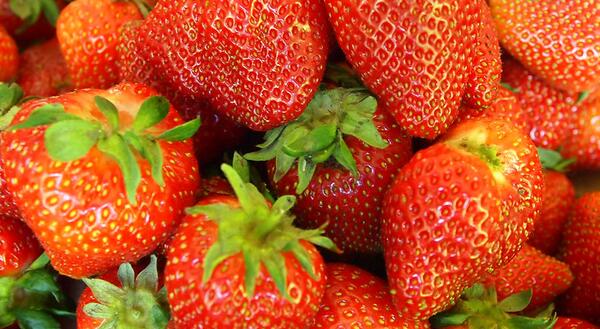
When it comes to fruits that evoke feelings of summer, strawberries are undoubtedly at the top of the list.
These delicious red berries have been a staple in many gardens and kitchens for centuries, and their popularity continues. Although we find it easy to love eating strawberries, growing them is a bit more complicated.
When cultivating strawberries, you have a choice of growing June-bearing, ever-bearing, or day-neutral varieties.
June-bearing strawberries
The most traditional and widely cultivated variety in Illinois and the Midwest. As their name suggests, they bear fruit in a concentrated period, typically June to early July. In spring, when daytime temperatures are above 50 degrees Fahrenheit, flowers open; as days grow longer and temperatures rise, these flowers mature into fruit.
A garden of June-bearing strawberries offers a month of bountiful harvest for strawberry lovers or at-home canners. Indulge for a few weeks, then tend to your actively growing plants. After the harvest season, plants form new flower buds and send out runners, also known as stolons, that create new plants for next year, according to Iowa State Extension.
Popular June-bearing cultivars include 'Allstar,' 'Earliglow,’ and ‘Jewel’.
Ever-bearing strawberries
Offering a longer fruiting season, a harvest of ever-bearing strawberries may be available in late spring, midsummer, and early fall. Although individual yields are smaller than June bearing harvests, their prolonged season provides a consistent supply of strawberries - an attractive feature to growers big and small. According to University of Minnesota Extension, ever-bearing strawberries will flower and fruit continuously in ideal growing temperatures (45 to 85 degrees Fahrenheit), but they will not produce flowers in hotter temperatures.
Popular ever-bearing cultivars include 'Quinault,' 'Ozark Beauty,' and 'Ft. Laramie’.
Day-neutral strawberries
Bred from ever-bearing types, this type is a recent addition to the strawberry family. Not affected by day length, these plants will produce fruit all season, regardless of the day length, or temperature. This characteristic extends the harvest window from early summer to first frost.
Day-neutral strawberries are versatile and well-adapted to various climates, making them suitable for a wide range of garden growing conditions. They are particularly favorable for climates with short growing seasons or unpredictable weather.
Popular day-neutral cultivars include 'Tristar,' 'Seascape,' and 'Tribute.'
An annual strawberry
Although unusual, day-neutral strawberries are being grown as an annual plant in Illinois Extension research plots. After planting in May, the strawberry plants become established and start fruiting in August, with fruiting continuing through October.
Growing day-neutral strawberries as an annual requires additional labor:
- Remove flowers the 6 weeks following planting
- Remove runners all season
- Maintain weed-free growing area
- Irrigate and fertilize to support the small root system on the fruiting plant
Plants are removed at end of season.
Advantages of annually grown day-neutral strawberries include a harvest window outside the unpredictable June season, elimination of challenges overwintering plants, and offering a profitable, additional crop for vegetable production growers.
From classic June-bearing to the emerging “annual” day neutral, strawberry varieties offer a delightful range of choices for gardeners and fruit enthusiasts. For more information on growing strawberries, reach out to your local Illinois Extension office.
Photo Credit: Fried Dough is marked with Public Domain Mark 1.0
ABOUT THE AUTHOR: Nick Frillman is a Local Foods and Small Farms Educator serving Livingston, McLean, and Woodford Counties. A fourth-generation graduate from University of Illinois, Frillman has a B.A. with a double major of Political Science and Spanish and a M.S. in Crop Science with a focus on crop production. Before joining Illinois Extension, Frillman completed a field season of CSA and farmers’ market-style production at a small “beyond-organic” vegetable farm in Sandy, Oregon.
ABOUT THE EDITOR: Liz Repplinger is the Agriculture and Natural Resources Program Coordinator serving Livingston, McLean, and Woodford Counties. A Bloomington-Normal native, Liz earned a B. A. in Animal Science and an M.S. in Animal Science from Illinois State University. She has enjoyed contributing to the multiple facets of Extension including previous support of the 4-H Youth Development Program as a program coordinator and current support of Unit and Statewide Diversity, Equity and Inclusion Initiatives.